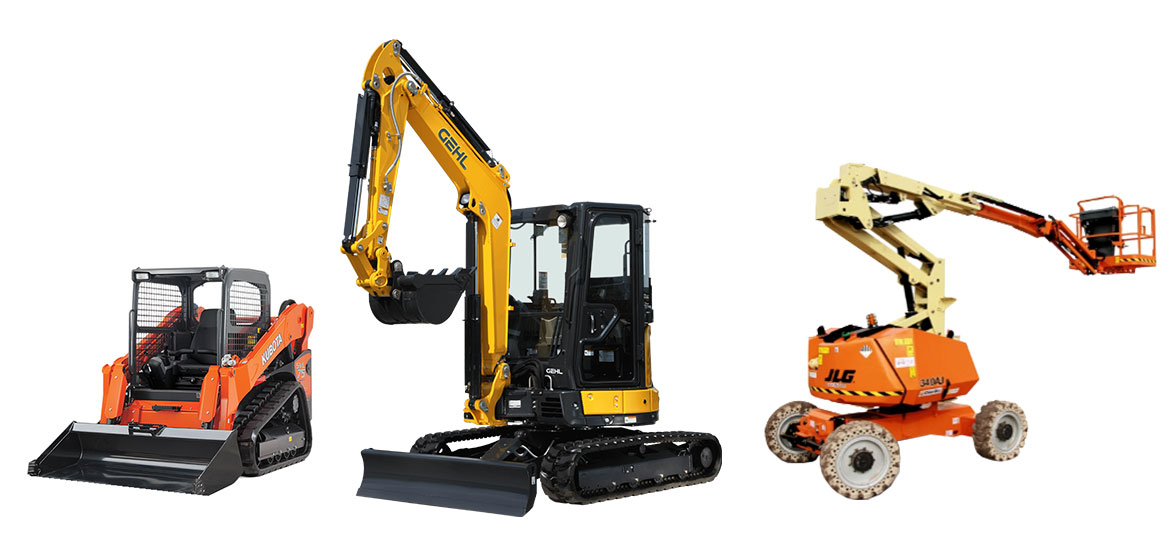Optimize Your Budget Plan by Recognizing the Prices Related To Construction Equipment Rentals
Recognizing the complete range of expenses connected with construction tools services is essential for maximizing your budget plan. While the initial rental fee may appear uncomplicated, countless additional expenses-- such as transportation, fuel surcharges, and upkeep-- can promptly accumulate, impacting your monetary preparation. Being conscious of various fees and the complexities of rental contracts can help stay clear of unexpected economic concerns. What methods can be utilized to efficiently take care of these expenses and make certain a much more efficient rental experience?
Review of Rental Prices
When considering building and construction equipment leasings, comprehending the connected costs is critical for reliable budgeting and task preparation. Rental prices can differ substantially based upon a number of variables, including equipment type, duration of leasing, and area. The first rental charge typically reflects the tools's market need and its connected operational capacities, affecting the total expenditure.
Along with the base rental price, supplementary expenses might arise, such as transport charges, gas additional charges, and upkeep fees. It is essential to account for these added costs to precisely analyze the total price of renting equipment. Moreover, the rental duration can impact pricing; longer rentals may qualify for reduced rates, while short-term rentals might incur higher day-to-day fees.

Break Down of Rental Prices
A thorough understanding of rental rates is necessary for specialists and task managers intending to enhance their budget plans. Rental prices for construction equipment generally include a number of parts, consisting of base prices, time-based charges, and usage charges.
Base rates are the core charges connected with the service of the devices, frequently identified by the type and size of the equipment. These prices can differ considerably, affected by elements such as devices demand, schedule, and regional market trends. Time-based costs, which might be daily, weekly, or monthly, serve to suit different project timelines and rental durations.
In addition, rental rates may include usage fees, which apply when tools is made use of past a specified threshold, guaranteeing that the rental firm can account for deterioration. Seasonal demand fluctuations can additionally influence rental rates, with peak building seasons commonly commanding higher rates.
Moreover, recognizing the rental company's policies relating to maintenance and insurance policy can offer further insight right into the total price structure. By examining these components, contractors can make informed decisions, making sure the selection of rental tools aligns with both project requirements and budget plan restraints.
Extra Costs to Think About
Comprehending the intricacies of added costs is crucial for professionals to handle their general service expenditures successfully. Past the typical rental rates, various auxiliary costs can dramatically impact the complete expense of equipment service. These fees frequently include distribution and pickup charges, which can differ based upon distance and logistics associated with moving the devices to and from the task website.
Furthermore, some rental business may impose fuel surcharges if the equipment is returned with less gas than when rented. It is additionally important to know potential cleaning costs, especially for customized equipment that needs detailed upkeep after use.

Completely reviewing the rental contract and clearing up these extra fees upfront can aid service providers ensure and prevent unexpected costs that budgets continue to be intact throughout the project lifecycle.
Repair And Maintenance Costs
Normal repair and maintenance expenses are frequently neglected factors that can dramatically influence the general price of building and construction devices leasings. When leasing tools, it is crucial to consider not just the rental costs but additionally the potential costs related to keeping the machinery in ideal operating problem.
Lots of rental business include basic upkeep as component of the rental contract; nevertheless, extra comprehensive repairs or unforeseen breakdowns can bring about extra expenses. It's important to review the rental agreement thoroughly to understand what upkeep services are covered and what obligations fall on the renter.
In addition, equipment that is not cheap heavy equipment well-kept can cause ineffectiveness on duty site, possibly creating delays and raising job expenses. To mitigate these threats, it is a good idea to conduct regular examinations and maintain open communication with the rental provider regarding any kind of concerns that develop throughout usage.
Insurance Coverage and Responsibility Prices
Insurance coverage and obligation costs are essential components that can substantially influence the total expenditure of construction devices services (forklift rental). These expenses ensure that both the rental company and the customer are secured from possible economic losses occurring from mishaps, damages, or burglary throughout the rental duration

Additionally, customers must know any deductibles or exemptions in the insurance coverage, as these can influence prospective out-of-pocket expenses. Understanding the conditions of any kind of insurance policy protection is vital to avoid unforeseen expenses. Ultimately, budgeting for insurance coverage and liability expenditures can help guarantee a smoother rental experience and safeguard versus monetary threats connected with building jobs.
Conclusion
In verdict, an extensive understanding of the expenses associated with construction devices rentals is crucial for effective budget monitoring. Ultimately, notified decision-making regarding equipment services contributes to the total success of building endeavors.
Rental costs can vary substantially based on several elements, including devices type, period of rental, and area (mini excavator rental). The rental period can impact prices; longer leasings might certify for affordable rates, while temporary rentals might sustain greater daily charges
By carrying out extensive research and engaging with respectable rental business, service providers why not check here can efficiently navigate the complexities of rental prices, ultimately maximizing their financial sources.
Past the common rental rates, different extra charges can significantly influence the complete cost of tools rental. Rental business commonly give obligation insurance policy that covers find out here now injuries to third events or damages to home, while tools damages insurance policy can cover the cost of fixings or substitute if the leased devices is damaged.